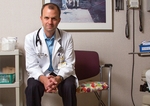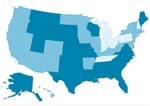government
First review in for embattled federal prevention fund
■ The HHS secretary directed hundreds of millions of dollars to programs that train primary care doctors, immunize teens and urge Americans to quit smoking.
By Charles Fiegl amednews staff — Posted Oct. 26, 2012
Washington The Dept. of Health and Human Services spent nearly $1.3 billion in two years on prevention and public health initiatives from an account controlled by the HHS secretary.
The Government Accountability Office issued a report on spending from the HHS prevention and public health fund following the enactment of the 2010 health system reform law that authorized the fund. Sens. Orrin Hatch (R, Utah) and Tom Coburn, MD (R, Okla.), had requested the analysis. Republicans have characterized the expenditures as waste that the government can’t afford to spend, and they regularly refer to the account as HHS Secretary Kathleen Sebelius’ “slush fund.”
The Affordable Care Act authorized $5 billion to be distributed by the secretary between 2010 and 2014. An additional $2 billion would be made available each year thereafter, but Congress voted in February to reduce total funding by $6.3 billion over 10 years to offset part of a legislative package that included a 10-month delay to the Medicare sustainable growth rate cut to physician pay.
The GOP senators have called for a full accounting of HHS activities involving the fund. The offices of Hatch and Dr. Coburn had not responded to requests for comment on the report by this article’s deadline.
The GAO report states that the Obama administration has relied on the distributing federal agencies themselves to track grant recipients and outcomes. Federal officials indicated it was too early to report on the outcomes of grants distributed in 2010 and 2011. For instance, one Health Resources and Services Administration education program supports training 172 primary care physicians, but data on the funds helping those seeking a career in medicine and the eventual success rate of the program will not be known until 2014.
In 2010, the prevention fund spent $500 million, with more than half going to HRSA. Primary care training and enhancement, which also included support for 140 new physician assistants, received nearly $200 million. Other expenditures included $31.4 million for advanced nurse education, $15.3 million for nurse managed care centers and $15 million for public health work force development.
More than 80% of the 2011 spending — $611 million — was distributed to programs led by the Centers for Disease Control and Prevention. The CDC community transformation grants program, which promotes local-level initiatives to prevent chronic diseases, received nearly $150 million. An immunization program to ensure that children are vaccinated appropriately also received $100 million.
HHS used the prevention fund for a total of 43 federal initiatives, which did not always include dollars related to work force issues and administration of health care services. For instance, a public health component of the fund involves tens of thousands of dollars going to states to purchase advertising for phone hotlines that encourage residents to quit smoking.












